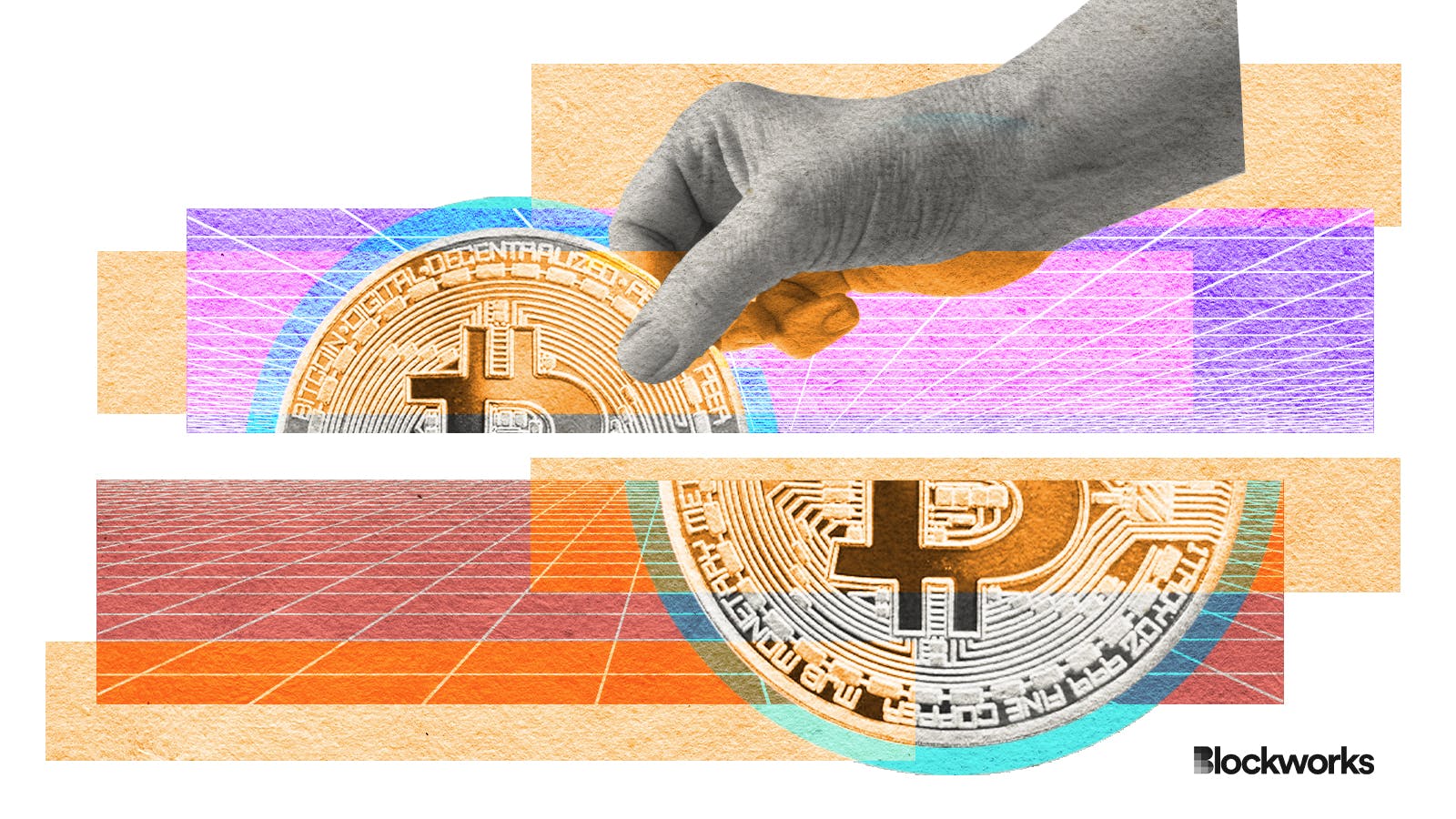Bitcoin halving expected to hit on 4/20
Yet more proof that we’re living in a simulation

Artwork by Crystal Le
So much of Bitcoin lore is built around memes.
“Stacking sats” describes how to buy into bitcoin without timing the market. “HODL” shows how to survive the volatility without losing one’s nerve, and “BUIDL” offers a blueprint for boosting adoption.
It’s no surprise then that bitcoin’s next halving event is now expected to hit on April 20. Yes, 4/20.
Bitcoin seeps fresh coins into circulation through miners, who earn a reward each time they solve. The network slashes that reward by half every 210,000 blocks.
This is the network’s fourth halving, which means it will take place at block height 840,000. As soon as that block hits, miners will suddenly go from earning 6.25 BTC ($259,000) to 3.125 BTC ($129,500).
Read more: Bitcoin halvings are bull market things — Will this time be different?
Right now, there are 12,510 blocks to go. There’s however no precise date or time for when Bitcoin will reach that block height. Websites counting down the halving show widely different results, from April 11 to April 21.
Carlos Mercado, data scientist at on-chain analytics firm Flipside Crypto, has meanwhile run 500 simulations of Bitcoin block times and found it will most likely coincide with the Superbowl for cannabis enthusiasts.
Bitcoin block times are regulated but random
The Bitcoin network is built to ensure blocks aren’t solved too quickly, no matter how many miners are active on the network.
Miners are directing more computing power (hash rate) to solving blocks than ever before, and more power means higher chances of mining a block in shorter periods of time. Left unchecked, this would mean the time between Bitcoin blocks would rapidly increase as more miners join the network.
Satoshi Nakamoto intended the 21 million bitcoins to be distributed over a long period of time, potentially more than a century; all supply would be issued too quickly if blocks were always mined within seconds rather than minutes.
Read more: Bitcoin’s ‘genesis’ block of transaction was created 15 years ago
Blocks are mined when a miner supplies a string of digits, known as a “hash,” under a certain numerical limit. Bitcoin raises and lowers that limit — the “difficulty” — depending on how quickly miners are supplying those hashes.
Over time, this increases how long it takes for miners to guess those answers and successfully discover blocks.
In a blog post detailing his simulations, Mercado explained that around every two weeks, Bitcoin checks the time it took to mine the previous 2,016 blocks. If they were “produced faster than expected, difficulty goes up to decrease production. If the blocks were produced slower than expected, difficulty falls to increase production.”
“The bitcoin hash rate, (the effort of miners to complete proof of work) is the defining factor of block production, but as or even more importantly, the difficulty adjustment every 2,016 blocks is a wholesale shift in how effective the hash rate is,” Mercado told Blockworks.
Bitcoin has added 147 blocks per day over the past year. But the difficulty indirectly influences how long it takes to mine blocks and how it plays out in real time is still incredibly random.
Blocks can be discovered within seconds of each other or, in the case of a block mined earlier this week, some aren’t added for more than an hour, with no transactions processed in that time.
So, Mercado ran hundreds of simulations based on the previous year to see if any patterns emerged. The simulations took into account potential difficulty adjustments forecasted by correlation rates between transaction fees and hash power.
Read more: Bitcoin price tracking ahead of the past 2 halvings — now 3 months to go
After running 500 simulations on the next 100 days of bitcoin mining production, the results showed the bitcoin halving most commonly occurred on April 20 — more than 200 times compared to 153 for the day after.
“For the math inclined: the bitcoin daily block production over the last 365 days has a skewness of -0.07 (very small skew to faster than expected block production),” Mercado said.
“This was because there were three raised difficulty adjustments in a row back in Q1 2023; but otherwise I’d still say the system is working and blocks are generally pacing as expected.”
And after all, bitcoin’s all-time high is currently $69,000. The next halving hitting on 4/20 would be only natural.
Get the news in your inbox. Explore Blockworks newsletters:
- The Breakdown: Decoding crypto and the markets. Daily.
- 0xResearch: Alpha in your inbox. Think like an analyst.






